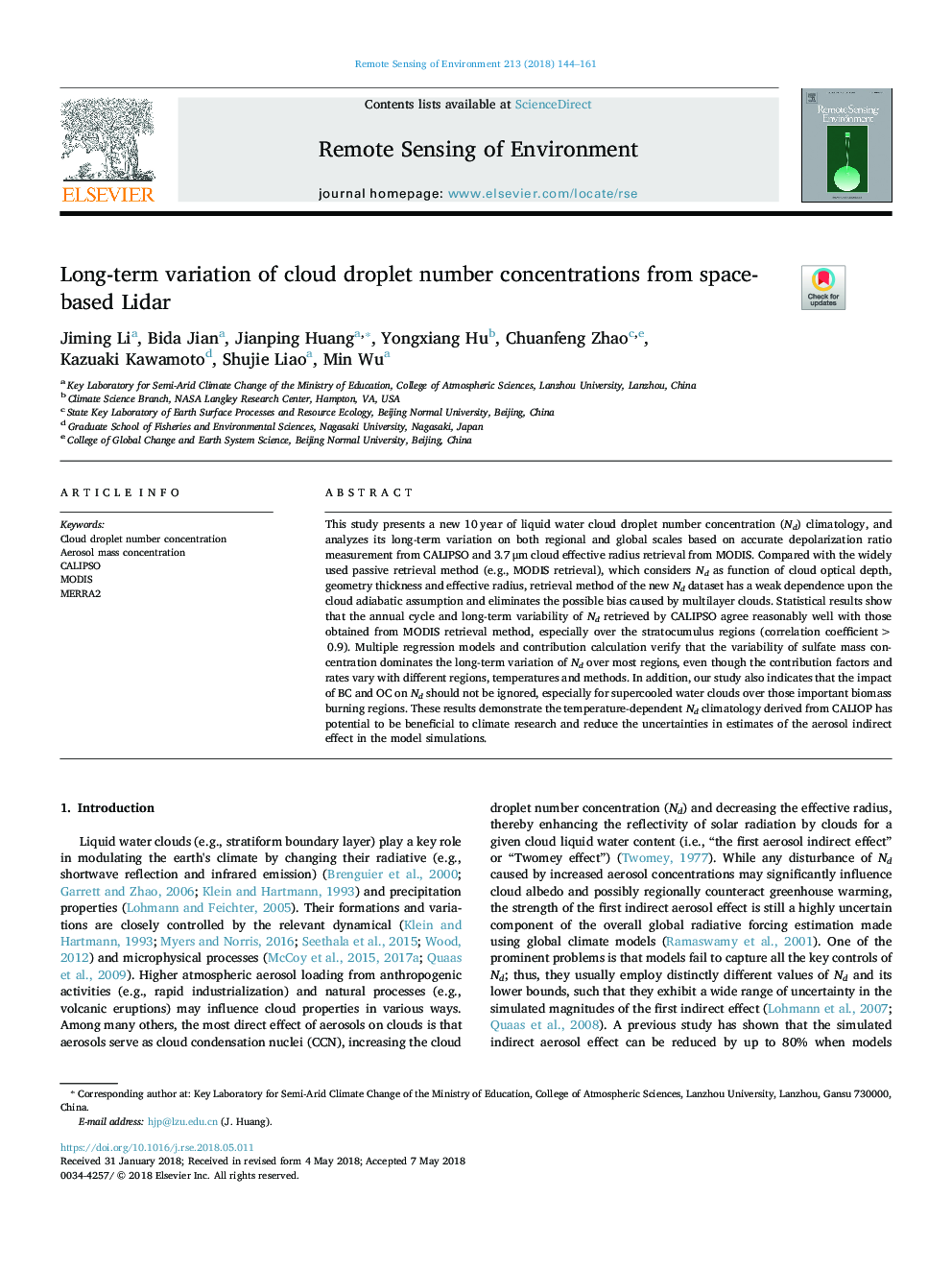| Article ID | Journal | Published Year | Pages | File Type |
|---|---|---|---|---|
| 8866517 | Remote Sensing of Environment | 2018 | 18 Pages |
Abstract
This study presents a new 10â¯year of liquid water cloud droplet number concentration (Nd) climatology, and analyzes its long-term variation on both regional and global scales based on accurate depolarization ratio measurement from CALIPSO and 3.7â¯Î¼m cloud effective radius retrieval from MODIS. Compared with the widely used passive retrieval method (e.g., MODIS retrieval), which considers Nd as function of cloud optical depth, geometry thickness and effective radius, retrieval method of the new Nd dataset has a weak dependence upon the cloud adiabatic assumption and eliminates the possible bias caused by multilayer clouds. Statistical results show that the annual cycle and long-term variability of Nd retrieved by CALIPSO agree reasonably well with those obtained from MODIS retrieval method, especially over the stratocumulus regions (correlation coefficient >0.9). Multiple regression models and contribution calculation verify that the variability of sulfate mass concentration dominates the long-term variation of Nd over most regions, even though the contribution factors and rates vary with different regions, temperatures and methods. In addition, our study also indicates that the impact of BC and OC on Nd should not be ignored, especially for supercooled water clouds over those important biomass burning regions. These results demonstrate the temperature-dependent Nd climatology derived from CALIOP has potential to be beneficial to climate research and reduce the uncertainties in estimates of the aerosol indirect effect in the model simulations.
Related Topics
Physical Sciences and Engineering
Earth and Planetary Sciences
Computers in Earth Sciences
Authors
Jiming Li, Bida Jian, Jianping Huang, Yongxiang Hu, Chuanfeng Zhao, Kazuaki Kawamoto, Shujie Liao, Min Wu,
